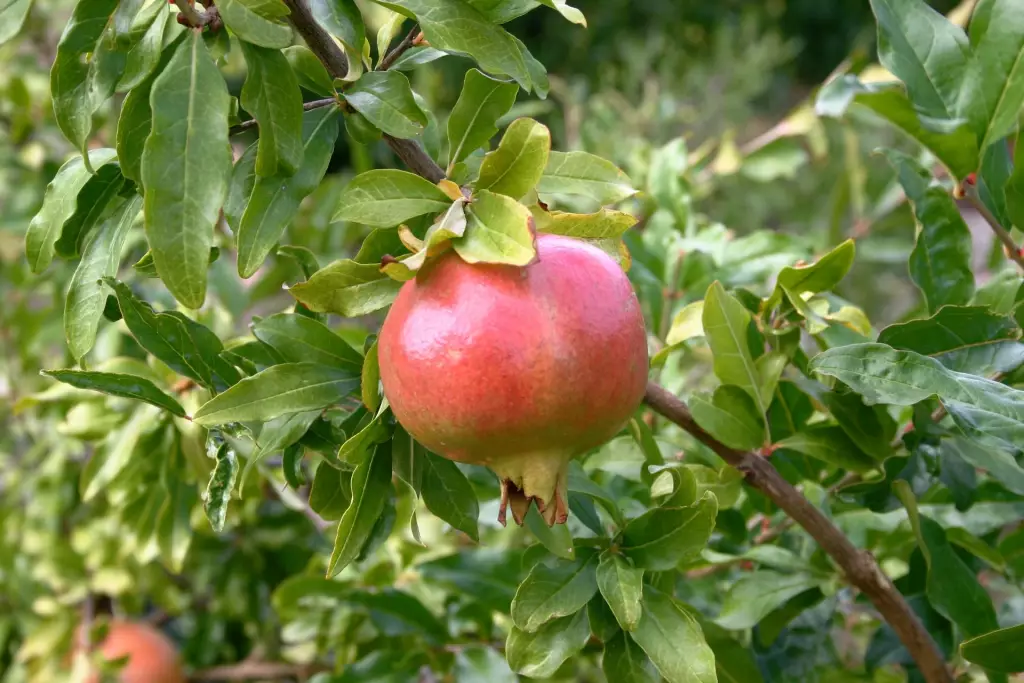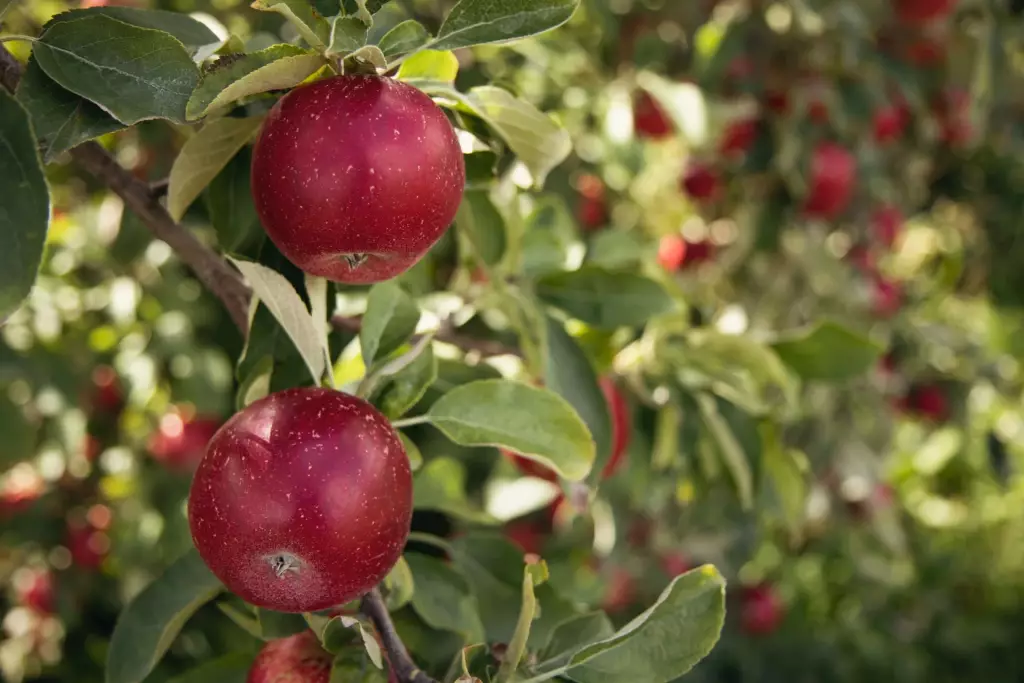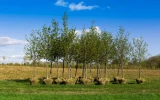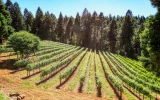13 Most Lucrative Fruit Trees (with Detailed Profit Breakdown)
Are you interested in growing fruit trees to earn some extra income and enjoy homegrown produce? It's important to choose the right trees to grow, as some may require more maintenance and may not be as profitable in the long run. To help you make a wise investment, we've put together a list of the most lucrative fruit trees, along with information on planting costs and expected profits.
Avocado fruit trees make the most profit, reaching up to $400 per tree, followed by mango and citrus trees, which make $300 per tree. Apple, peach, plum, cherry, pomegranate, fig, olive, guava, papaya, and passion fruit trees can also profit anywhere from $200 to $500 per tree.
Avocado trees thrive in warm, subtropical locations with mild winters and hot summers and are sensitive to frost and cold temperatures, so they should not be planted in places where temperatures often drop below 28 degrees Fahrenheit. If you want to make more profit in the winter, let's find out what fruit trees can tolerate cold temperatures.
Summary
- Avocado, mango, and citrus fruit trees are the top 3 most lucrative fruit trees to grow due to high demand and high prices for the fruit, especially in the global market.
- Research your local market demand and pricing for each fruit tree before investing in them.
- To maximize your profits, consider implementing sustainable farming practices such as crop rotation, soil conservation, and integrated pest management. These practices can help reduce your expenses and increase your yields over time.

On this page:
Most Profitable Fruit Trees to Grow
Here's a table showing rough estimates of the cost and profit for the 13 different fruit trees. Your actual costs and profits will depend on a variety of factors, including location, weather, and market demand.
| Most Lucrative Fruit Trees | Cost of Planting | Yield (fruit per tree) | Expected Selling Price |
|---|---|---|---|
| Avocado trees | $40 per tree | 200 pounds | $2 per pound |
| Mango trees | $30 per tree | 200 pounds | $1.50 per pound |
| Citrus trees | $20 per tree | 150 pounds | $1 per pound |
| Apple trees | $25 per tree | 100-200 pounds | $0.50 to $2.00 per pound |
| Peach trees | $6.50 per tree | 100-150 pounds | $0.75 to $2.50 per pound |
| Plum trees | $7.55 per tree | 100-150 pounds | $1.00 to $3.00 per pound |
| Cherry trees | $10 to $30 per tree | 50-100 pounds | $1.50 to $4.00 per pound |
| Pomegranate trees | $25 per tree | 50–100 pounds | $2.00 to $4.00 per pound |
| Fig trees | $15 to $25 per tree | 150-200 pounds | $200 per tree |
| Olive trees | $20 to $30 per tree | 10-100 pounds | $500 per tree |
| Guava trees | $10 to $15 per tree | 50-80 pounds | $300 per tree |
| Papaya trees | $10 to $20 per tree | 60-80 pounds | $250 per tree |
| Passion fruit trees | $10 to $20 per tree | 50-70 pounds | $300 per tree |
1. Avocado trees
Avocado trees are considered profitable due to high demand and high prices for the fruit, especially in the global market. They require a warm climate and well-draining soil. The cost of planting an avocado tree is around $40, and with proper care, you can expect a yield of around 200 pounds of fruit per tree.
The average price of avocados varies depending on the season and location, but you can expect to sell them for around $2 per pound. This means that you can earn up to $400 per tree, which is a great return on your investment.
2. Mango trees
Mango trees are considered profitable due to high demand and high prices for the fruit, especially in the global market. They require a warm climate and well-draining soil, and the cost of planting a mango tree is around $30. With proper care, you can expect a yield of around 200 pounds of fruit per tree.
The average price of mangoes varies depending on the season and location, but you can expect to sell them for around $1.50 per pound. This means that you can earn up to $300 per tree, which is a great return on your investment.
3. Citrus trees

Citrus trees, such as orange, lemon, and grapefruit trees, are also a profitable fruit tree to consider. They require a warm climate and well-draining soil, and the cost of planting a citrus tree is around $20. With proper care, you can expect a yield of around 150 pounds of fruit per tree.
Citrus trees can produce fruit for up to 25 years or more. The average price of citrus fruit varies depending on the season and location, but you can expect to sell them for around $1 per pound. This means that you can earn up to $150 per tree, which is still a great return on your investment.
4. Apple trees
Apple trees are a classic choice for a reason. They're relatively easy to grow and can be very profitable. Depending on the variety and location, you can earn anywhere from $0.50 to $2.00 per pound of apples. The average yield per tree is around 100-200 pounds, which means you could earn up to $400 per tree. Apple trees can produce fruit for up to 30 years or more.
5. Peach trees
Peach trees can produce fruit for up to 15 years or more. They're a bit more finicky than some other fruit trees, but they can be very lucrative. Depending on the variety and location, you can earn anywhere from $0.75 to $2.50 per pound of peaches. The average yield per tree is around 100-150 pounds, which means you could earn up to $375 per tree.
6. Plum trees
Plum trees are a good choice if you're looking for a fruit that's a bit different than the usual apples and peaches. They can produce fruit for up to 20 years or more. Depending on the variety and location, you can earn anywhere from $1.00 to $3.00 per pound of plums. The average yield per tree is around 100-150 pounds, which means you could earn up to $450 per tree.
7. Cherry trees
Cherry trees can be a bit more challenging to grow, but they can also be very profitable. Depending on the variety and location, you can earn anywhere from $1.50 to $4.00 per pound of cherries. The average yield per tree is around 50-100 pounds, which means you could earn up to $400 per tree. Cherry trees can produce fruit for up to 20 years or more.
8. Pomegranate trees

Pomegranate trees are a unique and profitable choice. They are relatively low-maintenance and can tolerate a wide range of growing conditions. Depending on the variety and location, you can earn anywhere from $2.00 to $4.00 per pound of pomegranates. The average yield per tree is around 50–100 pounds, which means you could earn up to $400 per tree.
9. Fig trees
Fig trees are easy to grow and are in high demand, making them a profitable choice. They require little maintenance and can produce up to two crops per year. Fig trees are relatively low-maintenance and can produce fruit for up to 100 years or more. The cost of a fig tree is around $15 to $25, and the profit per tree can be up to $200.
10. Olive trees
Olive trees are a long-term investment, but they can yield high profits. They require a warm climate and well-draining soil. Olive trees can produce fruit for up to 50 years or more, and the production costs are relatively low compared to other fruit trees. The cost of an olive tree is around $20 to $30, and the profit per tree can be up to $500.
11. Guava trees
Guava trees are a great choice for tropical climates. They grow quickly and produce fruit within two years of planting. They are relatively low-maintenance and can produce fruit for up to 20 years or more. The cost of a guava tree is around $10 to $15, and the profit per tree can be up to $300.
12. Papaya trees
Papaya trees are fast-growing and can produce fruit within a year of planting. They require a warm climate and well-draining soil. The cost of a papaya tree is around $10 to $20, and the profit per tree can be up to $250. Papaya trees are relatively fast-growing and can produce fruit for up to 3-4 years or more.
13. Passion fruit trees
Passion fruit trees are a great choice for warm climates. They require little maintenance and can produce fruit within a year of planting. The cost of a passion fruit tree is around $10 to $20, and the profit per tree can be up to $300.
Passion fruit trees are relatively easy to grow and require minimal maintenance. Passion fruit is a versatile fruit that can be used in a variety of products, including juice, jams, and desserts.
Factors Affecting Costs and Profits of Fruit Trees

Different fruit trees require different climate conditions
Fruit trees require specific climatic conditions to grow, and growing them in areas with unfavorable conditions can lead to reduced yields and increased costs.
-
Avocado trees: Avocado trees thrive in warm, subtropical climates with mild winters and hot summers. They require well-draining soil and prefer areas with moderate humidity. Avocado trees are sensitive to frost and cold temperatures, so they should not be planted in areas where temperatures regularly drop below 28 degrees Fahrenheit (-2 degrees Celsius).
-
Mango trees: Mango trees require a warm, tropical climate with temperatures between 70-85 degrees Fahrenheit (21-29 degrees Celsius). They require well-draining soil and prefer areas with high humidity. Mango trees are sensitive to frost and cold temperatures, so they should not be planted in areas where temperatures regularly drop below 40 degrees Fahrenheit (4 degrees Celsius).
-
Citrus trees: Citrus trees require a warm, subtropical climate with mild winters and hot summers. They require well-draining soil and prefer areas with moderate humidity. Citrus trees are sensitive to frost and cold temperatures, so they should not be planted in areas where temperatures regularly drop below 28 degrees Fahrenheit (-2 degrees Celsius).
-
Apple trees: Apple trees require a temperate climate with cold winters and moderate summers. They require well-draining soil and prefer areas with moderate humidity. Apple trees can tolerate frost and cold temperatures, but they require a certain amount of chill hours (hours below 45 degrees Fahrenheit) during the winter to produce fruit.
-
Peach trees: Peach trees require a warm, temperate climate with mild winters and hot summers. They require well-draining soil and prefer areas with moderate humidity. Peach trees can tolerate frost and cold temperatures, but they require a certain amount of chill hours (hours below 45 degrees Fahrenheit) during the winter to produce fruit.
-
Plum trees: Plum trees require a temperate climate with cold winters and moderate summers. They require well-draining soil and prefer areas with moderate humidity. Plum trees can tolerate frost and cold temperatures, but they require a certain amount of chill hours (hours below 45 degrees Fahrenheit) during the winter to produce fruit.
-
Cherry trees: Cherry trees require a temperate climate with cold winters and moderate summers. They require well-draining soil and prefer areas with moderate humidity. Cherry trees can tolerate frost and cold temperatures, but they require a certain amount of chill hours (hours below 45 degrees Fahrenheit) during the winter to produce fruit.
-
Pomegranate trees: Pomegranate trees are adapted to a wide range of climates, from subtropical to temperate regions. They prefer hot, dry summers and mild winters, but they can tolerate a wide range of temperatures. Pomegranate trees require well-draining soil and can tolerate low humidity.
-
Fig trees: Fig trees are adaptable to a wide range of climates, from subtropical to temperate regions. They require well-draining soil and prefer areas with moderate humidity. Fig trees can tolerate drought and high temperatures, but they require protection from frost and cold temperatures.
-
Olive trees: Olive trees require a warm, subtropical climate with mild winters and hot summers. They require well-draining soil and prefer areas with moderate humidity. Olive trees can tolerate drought and low humidity, but they are sensitive to frost and cold temperatures.
-
Guava trees: Guava trees require a warm, tropical climate with high humidity and frequent rainfall. They prefer temperatures between 68-86 degrees Fahrenheit (20-30 degrees Celsius). Guava trees require well-draining soil and can tolerate drought.
-
Papaya trees: Papaya trees require a warm, tropical climate with temperatures between 68-90 degrees Fahrenheit (20-32 degrees Celsius). They require well-draining soil and prefer areas with high humidity. Papaya trees can be grown in areas with low rainfall, but they require regular irrigation.
-
Passion fruit trees: Passion fruit trees require a warm, tropical climate with temperatures between 65-85 degrees Fahrenheit (18-29 degrees Celsius). They require well-draining soil and prefer areas with high humidity. Passion fruit trees can tolerate drought, but they require regular irrigation for optimal growth and fruit production.
Estimated investment and ongoing costs of fruit trees
| Fruit Trees with Investment and Ongoing Cost | Land Preparation, Planting, and Irrigation | Fertilization, Pest and Disease Control, Labor, and Marketing |
|---|---|---|
| Avocado trees | $16,000 to $24,000 per acre | $3,000 to $6,000 per acre per year |
| Mango trees | $15,000 to $25,000 per acre | $3,000 to $6,000 per acre per year |
| Citrus trees | $15,000 to $20,000 per acre | $2,500 to $5,000 per acre per year |
| Apple trees | $8,000 to $12,000 per acre | $2,000 to $4,000 per acre per year |
| Peach trees | $5,000 to $8,000 per acre | $2,000 to $3,500 per acre per year |
| Plum trees | $15,000 to $20,000 per acre | $2,500 to $5,000 per acre per year |
| Cherry trees | $25,000 to $35,000 per acre | $4,000 to $7,000 per acre per year |
| Pomegranate trees | $12,000 to $16,000 per acre | $2,500 to $5,000 per acre per year |
| Fig trees | $10,000 to $15,000 per acre | $2,000 to $4,000 per acre per year |
| Olive trees | $10,000 to $15,000 per acre | $2,000 to $4,000 per acre per year |
| Guava trees | $3,000 to $5,000 per acre | $2,000 to $3,000 per acre per year |
| Papaya trees | $10,000 to $15,000 per acre | $2,000 to $4,000 per acre per year |
| Passion fruit trees | $6,000 to $8,000 per acre | $2,500 to $3,500 per acre per year |
Tips for maximizing profits of your fruit trees
To maximize profits from your fruit tree orchard, you need to focus on increasing yields and reducing costs. Here are some tips to help you achieve this:
- Choose the right fruit tree varieties that are suitable for your location and have high yields and good market demand.
- Use modern farming practices, such as drip irrigation, integrated pest management, and precision farming, to reduce costs and increase yields.
- Adopt automation and mechanization, such as using tractors and pruning machines, to reduce labor costs and increase efficiency.
- Market your fruit trees effectively by developing a brand, using social media, and participating in farmers' markets and local events.



